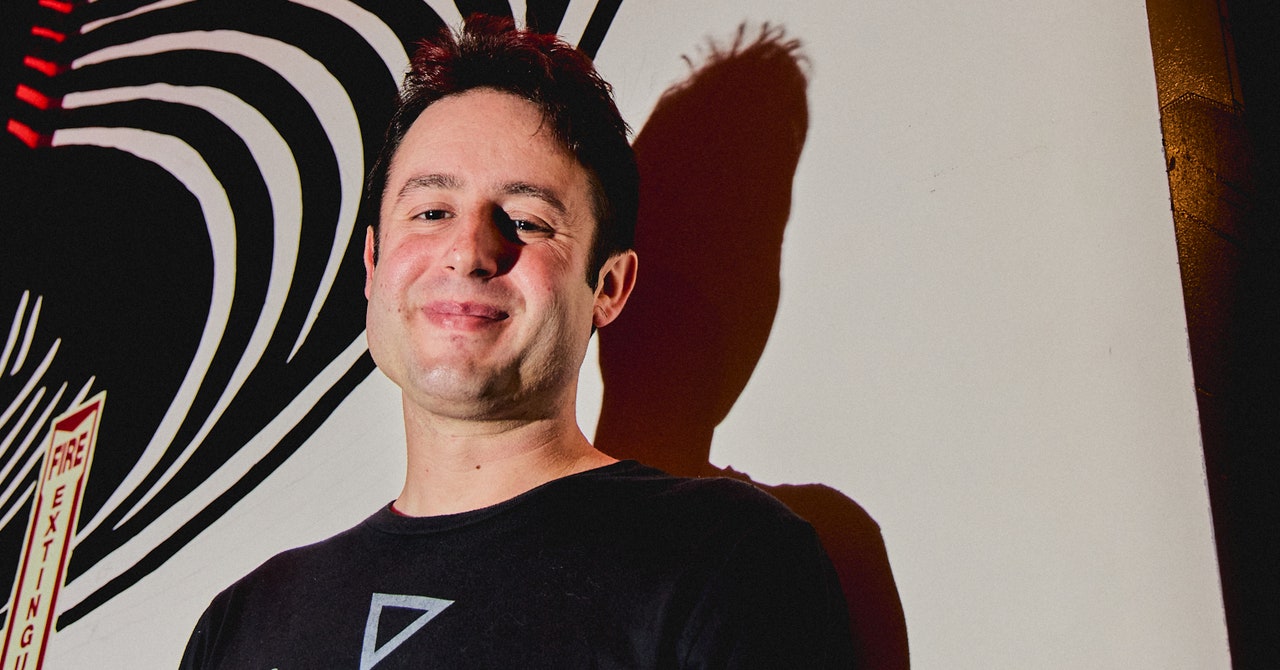Figma co-founder Dylan Field is apparently a big fan of Enron – or rather, of the crypto-fueled semi-parodic relaunch of the company that hit the web earlier this week.
Wearing an oversized Enron hoodie during his conversation with WIRED editor Steven Levy at The Big Interview event in San Francisco on Tuesday, Field said he’s always been a fan of the Enron logo, which was the last to be made by the legendary American graphic designer Paul Rand, of ABC, IBM, UPS and Westinghouse logo fame. But he said he also “got a real kick” out of the potential Enron relaunch, which has been linked to “Birds Aren’t Real” creator Connor Gaydos. As someone who was only 9 years old when Enron imploded in 2001, Field says he wonders (optimistically, it seems) if it’s possible to build a new business on the back of the tarnished brand, as his generation may not carry the kind of baggage related to corporate stumbles that others do.
Either way, it seems to be a matter of the power of design, something Field and Levy focused on more broadly as their chat continued, talking not only about the creation and development of the Figma platform, but also where the co-founder sees the company going in the immediate future.
Currently, Field says, the company has “millions” of users, with a third coming from the world of design, a third coming from the field of programming and a third coming from various other backgrounds. With Figma, he believes, brands and companies can express themselves visually much better than ever before, working together to understand faster what is graphically possible, what the best user experience is and how to best stand out in the market.
But in an age where AI has the potential to make most things look at least relatively good, Levy asked, how can companies using Figma hope to stand out? Field says the answer is not just to lower the floor to meet novice designers and coders, something that kind of AI work has already done, but to “raise the ceiling” to help pretty good designers and coders work beyond the previous limits of their skill sets.
The best designers, says Field, have a unique ability to manipulate interactivity, dynamics, movement and UX to create work that few others can match. With AI tools like the ones Figma has or will integrate, he hopes more people will be “limited more by their ideas than the tools in front of them”, ideally giving them the chance to match the work of some of the best designers in the world .
While Field acknowledged the possibility that good design can help bad actors, citing a particularly well-designed magazine that ISIS released around 2014 or 2015 as an extreme use case, he says that all tools have the power to lift people up if they are made correctly.
“Most of the AI tools right now are about lowering the floor,” Field reiterated. “They’re about doing it so there’s democratization and that’s great in a lot of ways, like you’re talking to people who are doing imaging with diffusion models and some of them are doing art therapy, which was never possible before.” Still, he added, raising the ceiling is important. “That’s where a lot of our thoughts are right now,” he said, “and that’s where I hope we can drive toward.”
X content
This content can also be viewed on the website it originates from from.
